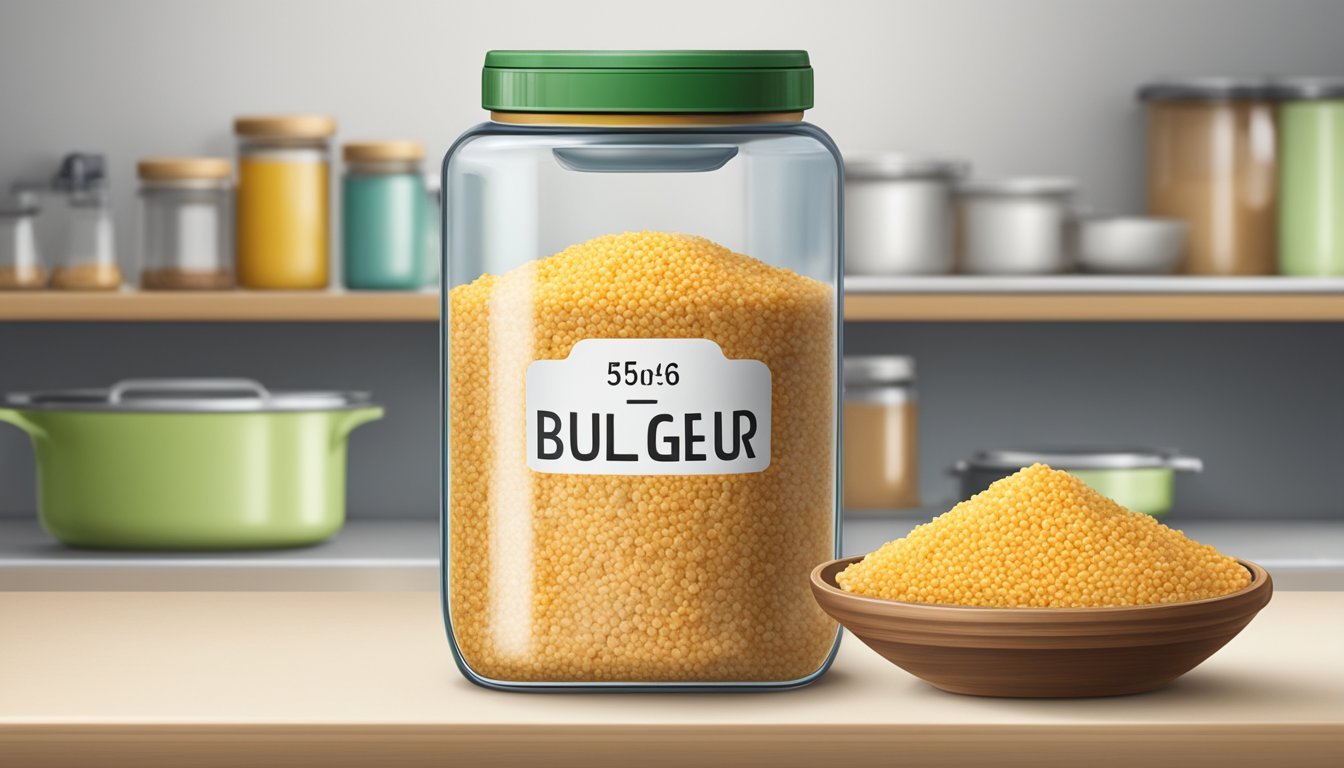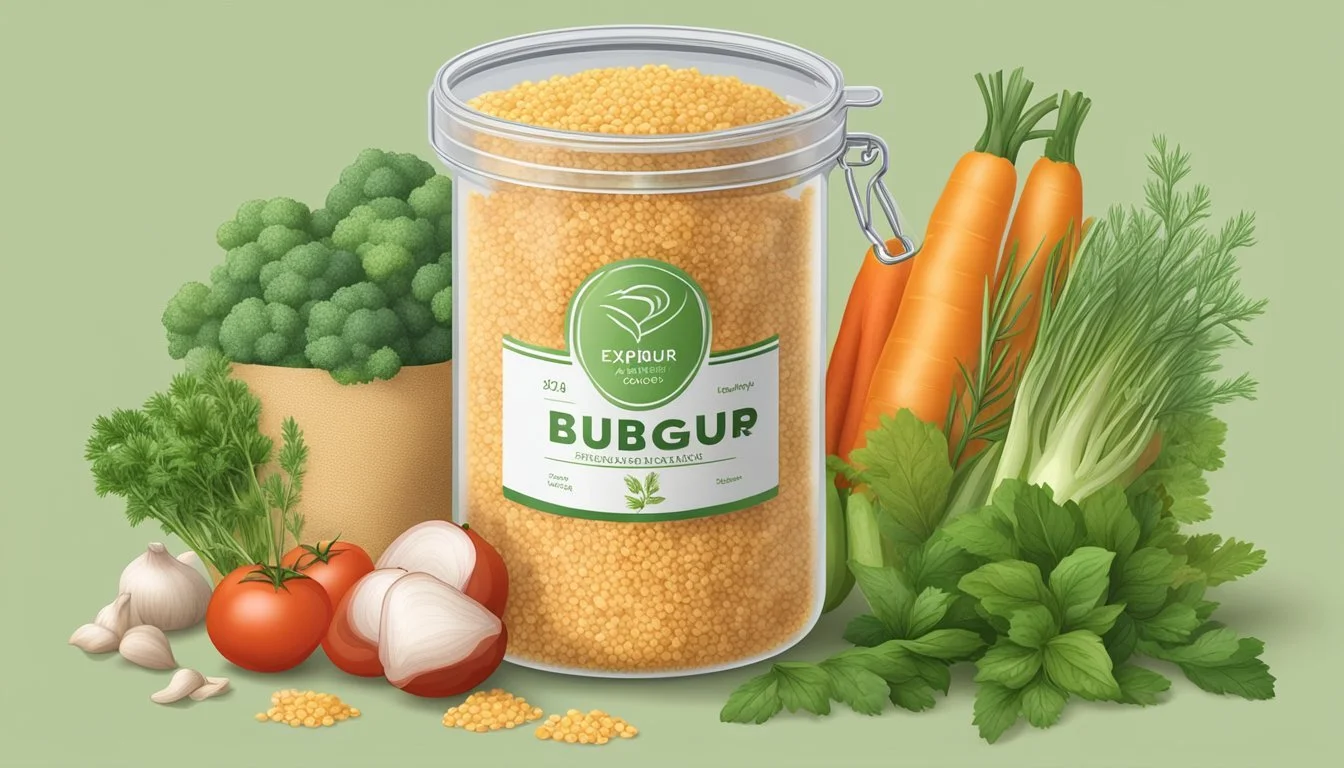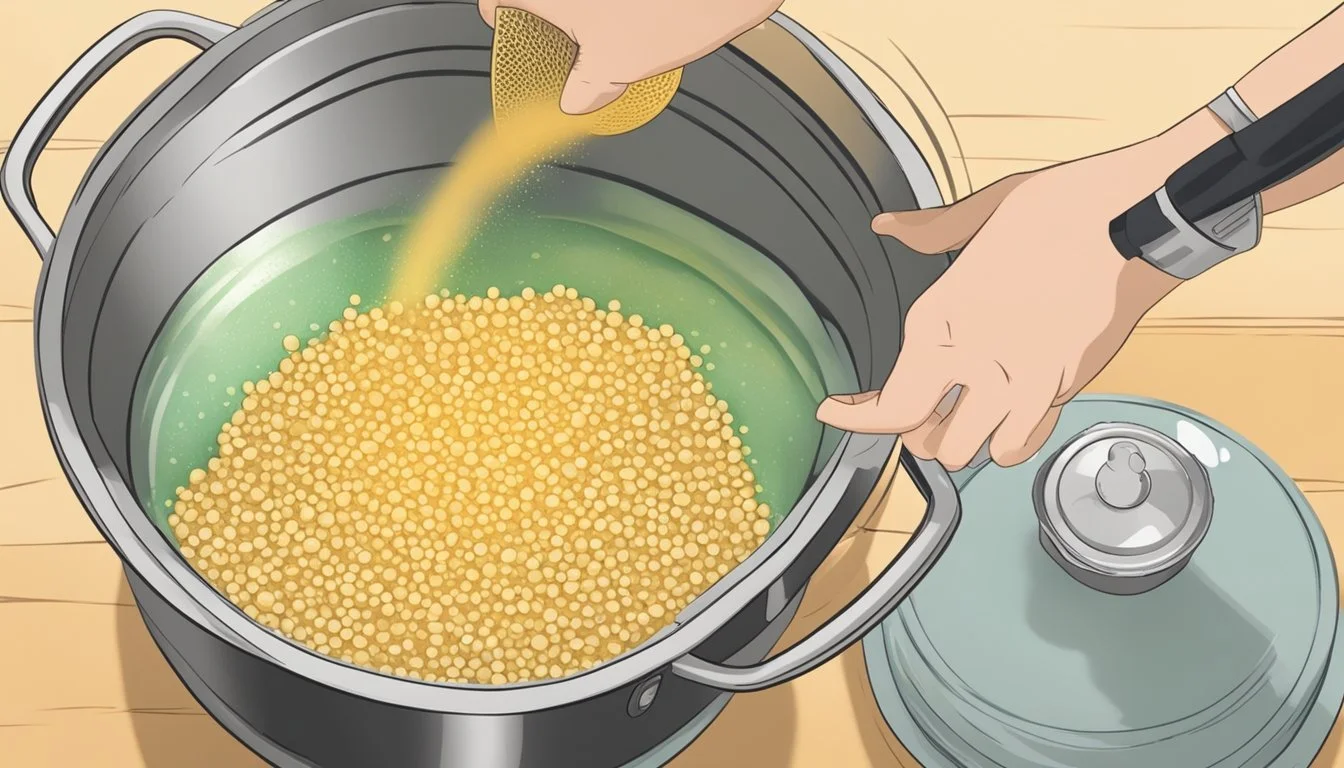Does Bulgur Go Bad?
Shelf Life and Storage Advice
Bulgur, a nutritious whole grain often used in salads and cooking, can indeed go bad. Bulgur can spoil if it's not stored properly, showing signs such as a rancid odor, discoloration, or mold. Keeping it in a cool, dry place in an airtight container can help extend its shelf life.
This versatile grain is a staple in many kitchens due to its ease of preparation and health benefits, including being rich in fiber and vitamins. Despite its durability, like any food product, it has a limited shelf life and needs proper storage to maintain its quality and safety.
Understanding the signs of spoilage and adhering to recommended storage practices ensures that your bulgur remains fresh and safe to eat, making it a reliable component in countless hearty meals and salads. By taking these precautions, you can continue to enjoy this wholesome grain to its fullest.
Understanding Bulgur as a Grain
Bulgur is a versatile grain known for its rich nutritional profile and adaptability in a variety of culinary dishes. This section explores what bulgur is, its nutritional benefits, and its common uses in cooking.
What is Bulgur?
Bulgur is a cereal food made from dried, cracked wheat. It is often made from durum wheat, which gives it a light, nutty flavor and chewy texture. Bulgur is a staple in Middle Eastern cuisine, particularly in dishes like tabbouleh and pilaf. The preparation process involves parboiling the wheat, drying it, and then cracking it into various sizes, ranging from fine to coarse.
Its ready-to-use nature makes it a convenient grain. Unlike other whole grains, bulgur cooks quickly, typically needing only about 10-15 minutes to prepare. This characteristic makes it a popular choice for busy kitchens.
Nutritional Profile of Bulgur
Bulgur is highly nutritious, offering a range of vitamins and minerals. It is notably high in fiber, making it an excellent grain for digestive health. A single cup of cooked bulgur contains about 150 calories, 8 grams of fiber, and 6 grams of protein.
In addition to fiber and protein, bulgur is a good source of iron and magnesium. It also contains B-vitamins, which are essential for energy metabolism and neurological function. This rich nutrient profile not only supports various bodily functions but also contributes to a balanced diet.
Culinary Uses of Bulgur
Bulgur's versatility shines in the kitchen. It is commonly used in salads, such as the famous tabbouleh, where it is mixed with parsley, mint, tomatoes, and lemon juice. Its firm texture and mild flavor make it suitable for hearty pilafs and as a base for grain bowls.
In soups, bulgur adds body and nutrition. It can be used as a stuffing for vegetables or combined with herbs and spices for a savory side dish. Additionally, because it readily absorbs flavors, bulgur can complement a variety of seasonings and ingredients, making it a valuable addition to any culinary repertoire.
Storage Insights for Bulgur
Proper storage of bulgur is essential to maintain its freshness and quality. Key points include the best storage conditions, the shelf life of uncooked bulgur, and the methods for refrigerating and freezing both uncooked and cooked bulgur.
Ideal Storage Conditions
To store bulgur effectively, keep it in a cool, dark, and dry place. A pantry is ideal, provided it is not exposed to heat or moisture. Use airtight containers to prevent pests and moisture from compromising the grains.
Glass jars with tight seals
Plastic containers with locking lids
Maintaining the right environment ensures that bulgur remains fresh and retains its nutritional value.
Shelf Life of Uncooked Bulgur
Uncooked bulgur can last quite a long time when stored properly.
Storage Method Shelf Life Pantry (airtight) Up to 1 year Freezer (airtight) Up to 2 years
Though it can last up to 2 years in a freezer, it's recommended to use it within a year for the best flavor and quality.
Refrigerating and Freezing Bulgur
Cooked bulgur should be stored in a sealed container to maintain freshness. In the refrigerator, it lasts about 5-7 days.
When freezing cooked bulgur, ensure it is placed in appropriate containers to avoid freezer burn. In the freezer, it can last up to 6 months.
Use freezer-safe bags or containers.
Label with dates to keep track of storage time.
Identifying Spoilage
To ensure the quality of bulgur, it is essential to recognize signs of spoilage and understand preventive measures to avoid contamination.
Signs of Bad Bulgur
Visual Indicators: Look for any discoloration or signs of mold on the bulgur. The presence of cobweb-like structures indicates potential insect infestation.
Smell: Fresh bulgur has a neutral, slightly nutty aroma. If it emits a rancid, sour, or otherwise unusual smell, it is likely spoiled.
Texture: Spoiled bulgur might have an unusual texture. It may feel sticky or clumpy rather than its typical dry, loose form.
Insects or Foreign Particles: Inspect for any insects or unusual particles in the storage container. Presence of these indicates contamination.
Preventing Spoilage and Contamination
Storage Conditions: Store bulgur in a cool, dry place. Using airtight containers helps prevent exposure to moisture and pests.
Proper Sealing: Ensure the container is sealed tightly after each use to avoid air and moisture ingress.
Regular Inspection: Periodically check the stored bulgur for any signs of spoilage. Early identification can prevent the spread of contamination.
Use-By Dates: Consuming bulgur within its recommended shelf life, typically up to a year, maximizes quality. For prolonged freshness, storing in the freezer is effective.
By following these guidelines, the risk of spoilage and contamination can be significantly reduced.
Maximizing Bulgur’s Freshness
Maintaining the freshness of bulgur requires careful storage practices, primarily focusing on proper sealing and avoiding exposure to unfavorable conditions.
Proper Sealing and Packaging
Bulgur should be stored in an airtight container to safeguard its freshness. Containers that effectively seal out air and moisture are essential. This prevents bulgur from coming into contact with excess oxygen and keeps it dry, reducing the risk of spoilage.
Glass jars with tight-fitting lids or high-quality plastic containers are ideal. For extended storage, vacuum-sealed bags work well, as they remove excess air, which can degrade the quality of the bulgur over time. Regularly inspect these containers for any damages or improper seals that could compromise their airtight properties.
Avoiding Heat, Moisture, and Air
To maximize bulgur's freshness, it is crucial to avoid exposing it to heat, moisture, and air. Store bulgur in a cool, dry place such as a pantry away from direct sunlight. High temperatures and humidity can accelerate spoilage, leading to mold growth or deterioration in taste and texture.
Using shelving away from ovens or windows helps maintain a consistently cool environment. Ensuring that the storage area is not prone to dampness will further protect bulgur from moisture absorption. Label containers with dates to keep track of storage time and prioritize using older stock first.
Implementing these practices will help preserve the quality and freshness of bulgur, allowing for a longer shelf life and better-tasting dishes.
Cooking and Preparing Bulgur
Bulgur is a nutritious grain known for its versatility in cooking. This section explores basic cooking instructions, its adaptability in various recipes, and substitutes that can be used in place of bulgur.
Basic Cooking Instructions
The process of cooking bulgur is straightforward. For every cup of bulgur, the typical water ratio is 2:1. Fine and medium bulgur grains can be prepared by soaking in boiling water for about 15-20 minutes until tender. For coarse bulgur, simmering in boiling water for about 12-15 minutes is more effective.
Using a rice cooker can also simplify the process. Place bulgur and water in the rice cooker and let it handle the cooking. This method ensures consistent results. Once cooked, fluff the bulgur with a fork to ensure a light and fluffy texture.
Versatility in Recipes
Bulgur is highly versatile and can substitute for grains such as rice, quinoa, and couscous in many dishes. It’s excellent in salads such as tabbouleh, soups, or as a side dish. Its mild nutty flavor pairs well with a variety of ingredients, from vegetables to meats.
One can bake with bulgur too. Adding it to bread or muffin recipes increases their fiber content. Bulgur can also be used as a binding agent in vegetarian patties or meatballs, offering a wholesome alternative to traditional fillers.
Substitutes for Bulgur
For those seeking a gluten-free option, quinoa is an excellent substitute due to its similar texture and cooking method. Brown rice is another alternative for those who prefer a heartier grain. Couscous provides a similar mouthfeel but is not gluten-free.
Fine and medium bulgur can be replaced with rice flakes or rolled oats in certain recipes. These substitutes offer different flavors and nutritional profiles but maintain the dish's integrity. Choosing the right substitute depends on culinary needs and dietary preferences.
Comparing Bulgur to Similar Grains
Bulgur is often compared to other grains like quinoa, rice, and couscous. Each of these has unique characteristics, nutritional values, and uses in cooking, making them suitable for different recipes and dietary needs.
Bulgur vs. Quinoa
Quinoa and bulgur are both nutritious, but they differ significantly. Quinoa is a gluten-free seed, while bulgur is a cracked wheat product and contains gluten. Nutritionally, quinoa is higher in protein with around 8 grams per cup compared to bulgur's 6 grams. Quinoa also provides essential amino acids, making it a complete protein.
In terms of cooking time, bulgur cooks faster, often ready in about 10-12 minutes, whereas quinoa can take 15-20 minutes. Texture and flavor also differ; bulgur has a chewy texture and a nutty flavor, while quinoa is fluffier with a mild, earthy taste. Both can be used interchangeably in salads, side dishes, and pilafs but will impart slightly different textures and flavors to the dish.
Bulgur vs. Rice
Rice, particularly brown rice, and bulgur share similarities but also have distinct differences. Nutritionally, bulgur generally offers more fiber and protein compared to white rice. One cup of cooked bulgur provides roughly 8 grams of fiber, whereas white rice offers only about 1 gram.
Cooking time sets them apart; bulgur needs about 10-12 minutes, much quicker than the 40-45 minutes for brown rice. White rice usually cooks in 15-20 minutes. Texture and flavor again vary; bulgur has a coarse, chewy texture, while rice can be soft and sticky or firm depending on the variety. Both grains can be used as substitutes in recipes, though the difference in texture and cooking time might require some adjustment.
Bulgur vs. Couscous
Bulgur and couscous are often used similarly in dishes but have notable differences. Couscous is a pasta-like product made from semolina wheat. Compared to bulgur, couscous is lower in fiber and protein. A cup of cooked couscous contains about 1 gram of fiber and 6 grams of protein.
Cooking time sees couscous being the quickest, requiring just about 5 minutes, while bulgur takes around 10-12 minutes. Texture and flavor differ; bulgur is chewy and nutty, whereas couscous is tender and mild. They can often be interchanged in recipes like salads and side dishes, though bulgur offers a heartier texture and richer taste.
Health Benefits of Bulgur
Bulgur is packed with dietary fiber, essential vitamins, and minerals, and supports weight management. These qualities make it a nutritious choice for many diets.
Dietary Fiber and Digestion
Bulgur is a high-fiber whole grain, providing about 6 grams per cup of cooked bulgur. This fiber content aids in digestion by promoting regular bowel movements and preventing constipation.
Whole grains like bulgur also support a healthy gut microbiome. Fiber acts as a prebiotic, feeding beneficial bacteria. This can lead to improved digestive health and enhanced nutrient absorption.
Adequate fiber intake is linked to lower risks of digestive disorders such as diverticulitis and colorectal cancer. Including bulgur in your diet can contribute substantially to your daily fiber needs.
Proteins, Vitamins, and Minerals
Bulgur is a source of plant-based protein. One cup of cooked bulgur offers around 5-6 grams of protein, essential for body repair and muscle maintenance.
Vitamins found in bulgur include the B-vitamins, which are crucial for energy production and red blood cell formation. Minerals present in bulgur, such as iron and magnesium, play significant roles in maintaining robust bodily functions.
Iron aids in oxygen transportation in the blood, while magnesium is vital for muscle function and bone health. The presence of phosphorus and potassium further enhances the nutritive value of bulgur, supporting overall wellness.
Weight Management
Bulgur is low in calories but high in nutrients, making it an excellent choice for weight management. Each cup contains around 151 calories, making it suitable for calorie-conscious diets.
The high fiber content of whole grains like bulgur helps you feel full for longer periods. This can reduce overall calorie intake and prevent overeating.
Additionally, the complex carbohydrates in bulgur are digested slowly, resulting in steady blood sugar levels. This helps in maintaining energy levels and can prevent insulin spikes that lead to fat storage. Incorporating bulgur into meals can be a strategy for healthy weight management.
Purchasing and Label Information
Choosing the right bulgur involves knowing how to read labels and selecting the appropriate type for your culinary needs.
Understanding Product Labels
When purchasing bulgur, check the expiration date to ensure freshness. Look for labels that indicate whether the bulgur is made from whole wheat grain or cracked wheat. The label should also specify the grind type—whether it is fine, medium, or coarse. Fine bulgur is suitable for salads like tabbouleh, while coarse bulgur is better for pilafs and soups.
Beware of additional ingredients or preservatives which can affect quality and taste. In labeling, keywords like "organic" or "non-GMO" may indicate higher quality. Note any gluten-free labels if you have dietary restrictions, although traditional bulgur is not gluten-free.
Selecting the Right Bulgur for Your Needs
Identify how you plan to use bulgur before purchasing. For Middle Eastern dishes, fine bulgur might be the right choice. Coarse or medium bulgur is preferable for soups and stews. The type of bulgur can also impact your dish's texture and cooking time.
Stock your pantry with bulgur that fits your culinary routines and dietary needs. For longer storage, uncooked bulgur can be kept in an airtight container in a cool, dry place. In terms of versatility and shelf life, bulgur is a durable and nutritious grain choice, making it a staple in many kitchens.









